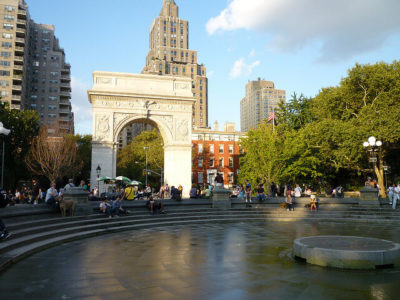The golf course is not where college students go to play their favorite sport.
Hitting the links is hardly necessary, as all they need to play their favorite game is a table, some plastic cups and a whole lot of alcohol.
But even though the lifestyles of college students and golf do not necessarily mix well, the one place they do intersect is at the college golf course.
Across the nation, universities manage their own golf courses that rival the likes of Pebble Beach and Augusta. Colleges like Stanford, Oklahoma State and Purdue have top-of-the-line courses for their golf teams to practice on.
In the College Mag area however, most schools must call golf courses outside of their universities home.
College Magazine details the best aspects of these courses, how easy it is for the average college student to play there and the difficulty of the course.
Aronimink Golf Club (Villanova University)
Villanova University’s golf team actually calls many golf courses home, including Aronimink in Newton Square, Pa., and Overbrook Golf Club in Villanova, Pa.
This year, Aronimink is the most interesting of these two courses though, as Tiger Woods’ AT&T National Tournament will be played there in June.
If anyone does get a shot to play Aronimink, they need to be sure to at the top of their games. The design of the course mixes a variety of holes to keep golfers on their toes. With so many different looks, iron play is key.
“It’s a long intimidating track,” assistant coach James Wilkes said. “Before the AT&T they took out hundreds of trees, so it’s wide open. The intimidation factor is good for our guys; it’s like lifting weights.”
Needless to say, with Tiger hosting an event at the course, it is very difficult to play a round of golf there. Students either need to get a membership or find someone who has one.
Hillendale Country Club (Towson University)
Hillendale Country Club, located in Phoenix, Md., is home to the Towson Tigers golf teams.
Although not as difficult as a whole compared to Aronimink, the course boasts numerous holes with impressive dog legs that will challenge any golfer. Many greens are surrounded by bunkers, meaning golfers must be proficient in their pitching.
Created in the 1920’s, this country club is going to be difficult for college students to play, as golfers need a membership or know someone who is a member.
University of Maryland Golf Course (University of Maryland)
The University of Maryland is the only university in the College Mag area with its very own golf course, which a few years ago underwent some renovations.
Since the university owns it, the UMD course is very affordable for students. Golfers at the school can sometimes spend as little as $20 on a round of golf.
The course is very open, but some holes, with numerous bunkers and narrowing fairways, can get people in trouble on their first stroke. Others allow for golfers to attack the hole immediately for a chance at a birdie. When driving off the tee, it is important to know when to play it safe and when to let loose.
Laurel Hill Golf Club (George Washington University)
Laurel Hill Golf Club sounds and looks very prestigious, but the course was actually built on land previously used for a prison.
Besides the quirky character of the land, students will also enjoy the fact that they can play this course. Laurel Hill is a municipal course in Fairfax County, Va., and, although more expensive than Maryland’s course, can be played by anyone.
The course is more than 6,300 yards long and could be longer depending on what tee golfers play off of. With many long holes, including three 500-yards, par-5s, a golfer who is not afraid to crush their driver will be ready to conquer the course.
The Member’s Club at Four Streams (Georgetown University)
The Georgetown University golf teams head out of the city to Beallsville, Md., to play at The Member’s Club at Four Streams.
General manager Kevin Taylor said the most difficult part of the course is the 11th hole, an almost 500-yard par-4 that challenges golfers length-wise.
“The average player is hitting a downhill lie to an uphill green,” Taylor said.
The general manager also said wind is always a factor at the course and forces people to play holes differently depending on the day. Golfers can get into trouble early and often with expansive bunkers, trees and difficult-to-read greens.
Unfortunately, like Aronimink and Hillendale, Four Streams is a country club, meaning no students can come off the streets to play.
Photo by Fevi Yu



















